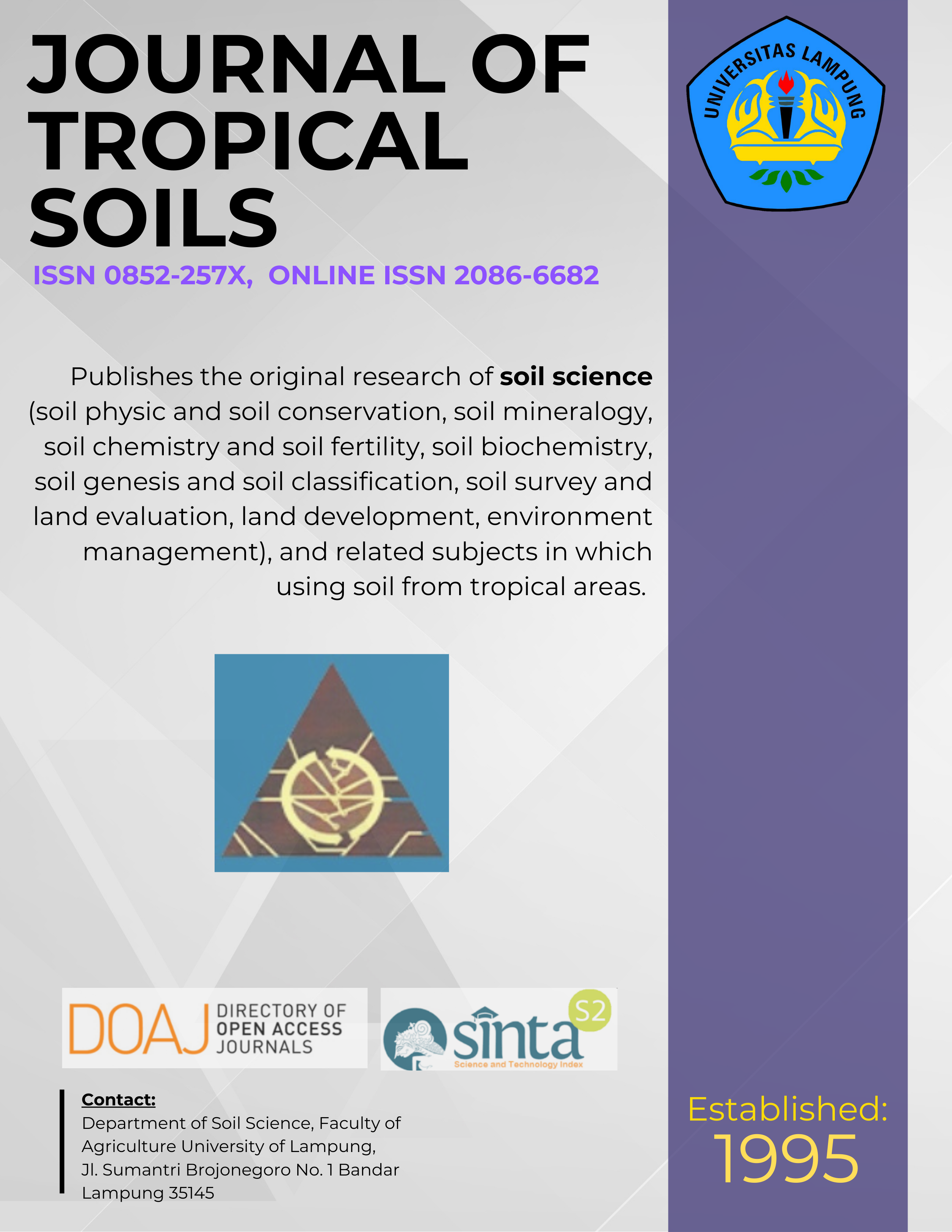Phosphate Solubilizing Microorganism and available P on the Rizosphere of some Ages and Distances from the Center of Maize Roots
Main Article Content
Abstract
Effect of the age and root distance of maize on the population of phosphate solubilizing microorganisms was studied. The rizosphere and non-rhizosphere soil of maize was setup in the special pots with dimension of 60 cm x 60 cm x 30 cm in the glasshouse. The Ultisols soil was planted with maize until the vegetative stages. The results showed that on the distance of > 20 cm from center of roots, the age of maize increase the population of phosphate solubilizing microorganisms. The population of phosphate solubilizing microorganisms in the rhizosphere soil was 8 - 23× more than from those non-rhizosphere soils. On the distance of 0-10 cm, the age of maize affected the number of phosphate solubilizing microorganisms in the rizosphere and non-rhizosphere soil. Available-P (Bray I) was affected by the age and distance of root maize. The highest value was observed on the 7 weeks after planting at a distance of >20 cm.  Available P was significantly higher in the rhizosphere soil than that in non-rhizosphere soil, especially at a distance of >20 cm on the 7 weeks after planting. The positive correlation was occurred between phosphate solubilizing microorganism and the value of available-P, soil pH, organic C and total N.
Downloads
Article Details
Issue
Section
License for Authors
Authors who publish with this journal agree to the following terms:
- Authors retain copyright and grant the journal right of first publication with the work simultaneously licensed under a Creative Commons Attribution License that allows others to share the work with an acknowledgement of the work's authorship and initial publication in this journal.
- Authors are able to enter into separate, additional contractual arrangements for the non-exclusive distribution of the journal's published version of the work (e.g., post it to an institutional repository or publish it in a book), with an acknowledgement of its initial publication in this journal.
- Authors are permitted and encouraged to post their work online (e.g., in institutional repositories or on their website) prior to and during the submission process, as it can lead to productive exchanges, as well as earlier and greater citation of published work (See The Effect of Open Access).
License for Regular Users
Other regular users who want to cite, distribute, remix, tweak, and build upon author’s works, even for commercial purposes, should acknowledge the work’s authorship and initial publication in this journal, licensed under a Creative Commons Attribution License.

